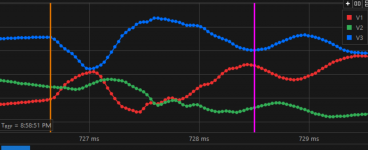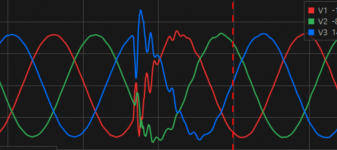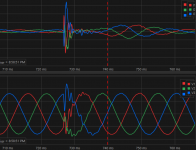Symptoms: Customer experiencing VFD failure or fault. In case of failure the IGBTs are getting destroyed; and faults seem to be caused by VFD controller detecting overvoltage.
Please see attached waveforms taken at 480V utility. We started monitoring the line after the VFDs failures and timing of the these data captures match the latest VFDs faults. Sampling frequency is 2.5kHz. I suspect capacitor bank switching because of the sudden drop in voltage followed by oscillation (seems to be about 500Hz) and current spike.





Please see attached waveforms taken at 480V utility. We started monitoring the line after the VFDs failures and timing of the these data captures match the latest VFDs faults. Sampling frequency is 2.5kHz. I suspect capacitor bank switching because of the sudden drop in voltage followed by oscillation (seems to be about 500Hz) and current spike.





